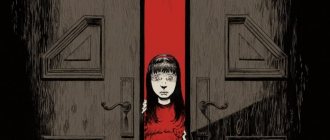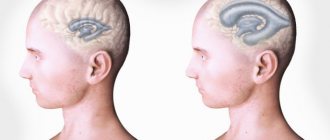Treatment
The main goal of treating phobias is to teach the animal to see positive things when faced with an external stimulus, such as a reward. But this will require persistence and patience. The most important thing to understand is that you should not reinforce the animal’s incorrect behavior when a stressful situation arises by petting, calming and encouraging it.
The approach to any type of fear is basically the same.
The first step is to identify the external stimulus. When you install it, in the first stage, try to avoid all possible collisions with it, if possible. Your dog is afraid of thunderstorms: Start training at a time of year when the likelihood of this natural phenomenon is minimal, such as winter.
The next step: you need to reduce the sensitivity of the animal and teach it to relax in the presence of an exciting factor. This needs to be done gradually and systematically. If your dog is afraid of strangers, ask a friend to help you with this. Place the dog in a crate and have a friend enter the room, but keep a large enough distance to keep the dog calm. Reward your dog's behavior with a favorite treat or affection. A stranger may try to desensitize the dog by throwing food at a distance while avoiding eye contact and gradually approaching him sideways. Over the course of several training sessions, ask your friend to move closer to the dog each time, while keeping the dog calm. Remember to reward your dog for being calm and relaxed and don't encourage him to react inappropriately. The animal must gradually learn to associate the external stimulus with positive things, such as a treat, resulting in a less intense response each time.
How does zoophobia manifest itself and what is dangerous?
The manifestations of zoophobia are quite typical and are fundamentally no different from the manifestations of other phobias. Often people who are susceptible to fear begin to panic when they encounter an animal, some fall into a stupor, while others try to run away. At the same time, their heart beats strongly, they breathe heavily, they sweat and their blood pressure rises. In some cases, there may be dizziness, convulsions, and fainting. Unpleasant sensations may linger with zoophobes for a long time after the “threat” itself has passed.
Not wanting to experience such conditions, those suffering from zoophobia try to avoid encounters with animals:
- they do not go to places where they can be found, for example, zoos, pet stores;
- do not go on trips to nature;
- do not keep animals as pets.
In the most severe cases, fear can affect the character and behavior of people, make them irritated, angry, nervous, and lead to depression. The animals they are afraid of can haunt them even in their sleep: they may have nightmares, which will lead to sleep disorders and insomnia.
Those who have a rich imagination suffer especially strongly from zoophobia - they can see the outlines of animals in the objects around them and panic if someone starts talking about animals. If the matter has gone so far and a person is not able to get out of this state on his own, professional treatment can help him.
Symptoms of fear
The main manifestation of cynophobia is internal tension that has no apparent reason. The potential threat of attack leads to obsessive thoughts and increased anxiety. It is enough to see a picture or figure of a dog, watch a commercial with animals, or simply remember the source of fear.
Like most anxiety-phobic disorders, cynophobia is accompanied by sleep disturbances. Lack of sleep at night, drowsiness during the day, interrupted sleep, nightmares exhaust the patient, increasing nervousness and anxiety.
In early childhood, there is no critical thinking, so the fear of dogs in children is not accompanied by obsessive fears. The development of a phobia in a child can be tracked by changes in the psycho-emotional state and behavior.
Character traits:
- Unreasonable tantrums.
- Crying at night.
- Fussiness.
- Inconsistency of actions.
- Restlessness.
- Hostility towards others.
- Aggressiveness.
Closer to school age, children begin to understand the illogicality of their behavior, try to contain their anxiety, and try to hide their fear of others.
A kinophobe of any age has signs of autonomic disorders:
- Hot flashes.
- Paleness of the skin.
- Tremor of the limbs.
- Muscle spasms.
- Hyperhidrosis.
- Tachycardia.
- Chest tightness.
- Dyspeptic disorders.
In severe cases, panic attacks occur, characterized by uncontrollable horror, fear of death, and lack of control over the actions of the body. In addition to panic attacks, the development of vegetative crises and nervous breakdowns is possible.
What is the fear of animals called, and how does it manifest itself?
The so-called zoophobia is expressed in certain symptoms:
- Panic, which cannot be explained logically, is fear at the sight of a specific animal or at the thought of an animal.
- Obsessive thoughts about a representative of the animal world, the desire to avoid meeting in any way (a person may stop visiting people who have animals at home, or in severe cases, stop going out).
- Performing so-called ritual actions, which, in the patient’s opinion, will help avoid contact with domestic or wild animals.
- Somatic symptoms are expressed in rapid heartbeat, sweating of the extremities, tremors, nausea, which in rare cases can turn into vomiting.
Fear in animals
Fear
is a very strong emotion of an uncomfortable type, the consequence of which can be various (outwardly opposite) behavioral reactions.
Biological meaning of fear
is to enhance individual perception of possible (but not obvious) danger and take immediate action to avoid possible contact with the source of danger.
The fear reaction, depending on the nature of the stimulus, circumstances, individual characteristics and condition of the animal, manifests itself in a unified manner. The consequence of fear can be:
- hiding reaction (immobilization);
- escape (mobilization);
- attack (in the absence of choice).
R. Hind (1975) believes that the first two reactions develop in response to the same stimulus, but of different strengths. A weak stimulus causes a hiding reaction. The same stimulus, but with greater force, provokes flight. However, he also agrees that this is not the absolute truth.
This judgment is also common. Flight (or retreat) occurs in response to a strong stimulus or to situations that are definitely unfavorable for the animal. The animal’s personal experience (the result of learning) can also be used in the retreat reaction.
The fear reaction in the form of hiding (freezing) occurs in response to the presentation of an unfamiliar or unexpected stimulus to the animal. The hiding response is purely instinctive and does not require learning. The hiding reaction is characteristic primarily of animals that, for various reasons, do not have the opportunity to respond to a frightening factor by flight. This is what chicks and young immature animals do.
But the freezing reaction can also be observed in adult animals. Thus, wild birds (tit, sparrow, and less often domestic chickens), when picked up, imitate death. In a situation that poses a mortal danger to them, the birds lie motionless on their sides or backs with their eyes open. If a bird in this state is carefully lifted and thrown up, it instantly “comes to its senses” and flies away (the chicken runs away).
Similar behavior of freezing in a state of severe fear has been described for mammals - mice, hares, foxes.
In chicks, as in other brood chicks, the fear reaction is accompanied by the sudden onset and cessation of specific vocalizations. The squeaking of chickens generally indicates their distress, which develops not only under the influence of fear, but also other unfavorable factors. When frightened, the chicken emits a sharp squeak of alarm. The cessation of squeaking in this situation does not indicate the comfortable state of the chicks, but that the fright has reached a certain critical value and turned into fear. The fact that the squeak of a chick when frightened should be regarded as an alarm signal and a call for help is confirmed by the reaction of adult birds to this signal. Indeed, in response to the chick's alarming squeak, the hen demonstrates aggressive behavior. The rooster definitely behaves aggressively towards the offender of the chicken.
The fear reaction in animals develops in various situations. However, objects and phenomena that are undoubtedly biologically dangerous for the animal cause a flight reaction from the first presentation in most species. These are innately recognizable signs of a predator, sound alarm signals emanating from relatives. For example, day-old chicks stop squeaking and hide when the hen clucks anxiously. Chickens demonstrate the same behavior when they are suddenly shaded in the experiment.
In adult animals, the reaction to an unfamiliar object is ambiguous. Laboratory rats freeze, run away, or hide when an unfamiliar object is placed in the playpen. However, there are individuals who, although with caution, nevertheless approach the object in order to study it.
In general, it can be argued that fear arises either because animals encounter stimuli that have specific signs and properties that animals innately recognize as danger. Either the stimuli differ from the usual ones by excessive force, or the stimuli are presented to the animal suddenly.
A fear reaction can also be provoked by neutral stimuli if they are simultaneously presented and additively perceived by the animal.
In other circumstances, even dangerous stimuli do not cause feelings of fear in animals. For example, three-week-old kittens freeze in response to the approach of an aggressive, clucking rooster, clearly showing fear. But in the presence of a mother cat, these same kittens do not perceive the same pugnacious rooster as a potential danger.
In animals leading a group lifestyle, the feeling of fear is enhanced by the partial or complete isolation of an individual from its relatives. Interestingly, placing a mirror in the cage reduces the level of fear in the isolate.
The duration of the feeling of fear depends on the nature of the stimulus. And the reaction of avoiding danger will continue until the animal manages to go beyond the sphere of influence of the dangerous factor.
If the perception of danger is delayed, then the situation can develop in two directions. Firstly, it is possible to develop a habituation (accustomation) to a stimulus if it goes from being dangerous to the category of neutral stimuli. This happens when a kitten is brought into a family with a dog. After some time, the kitten gets used to the sight of the dog and stops perceiving it as a danger. Often the dog goes from being a potential enemy to being a friend, a guardian, or even a surrogate mother.
However, there are irritants to which addiction is not developed. At one time, the outstanding medieval scientist Abu Ali ibn Sina described the experience of keeping a lamb and a wolf together, who could see each other through a dividing lattice. The lamb could not get used to the constant presence of such a terrible neighbor as the wolf. Under the influence of constantly felt fear, the lamb stopped growing and developed multiple vegetative and psychosomatic pathologies. In the end, the animal died, and died, in fact, from fear.
Among experts, there is a lot of debate about the question of which locomotor reactions of animals should be classified as external signs of fear. A dangerous stimulus can cause both the animal’s flight and its aggression towards the source of danger. It is known that a rat, driven into a corner by its pursuer, often turns into an aggressor itself. In addition, fear can also cause the animal's exploratory behavior.
In this regard, we can agree with the point of view of A.F. Fraser and D.M. Broom (1997), who consider fear as a heterogeneous state with ambiguous external manifestations of a frightened animal. According to them, on the one hand, fear is a reaction of preparing an animal for danger with the activation of sympathoadrenal regulation, and on the other hand, it is a reaction to a real existing danger that has arisen and been recorded.
The second point explains the etiology of aggressive behavior of animals in a state of fear. Probably everyone has watched how a large and strong hawk in the sky is attacked by small and physically weak birds, say, swallows. Sometimes larger birds, such as blackbirds and crows, join the swallows. An attack by a group of small animals on a dangerous predator is called “mobbing.” The reason why small birds attack a hawk is not the real danger that the predator poses, but the fear of it as a source of potential danger.
The feeling of fear that arises in the presence of a predator is a priority emotion, so biologically significant that it does not disappear from the genetic memory of animals even after many thousands of years that went into domesticating animals. For thousands of generations, domestic animals were raised and protected by humans and therefore had no contact with predators. However, domestic animals recognize predators without prior training and experience an innate fear of them.
In domestic cows, horses, and pigs, the fear of the wolf is so strong that even a domestic dog provokes mobing when approaching a grazing herd. A herd of cattle demonstrates particular aggressiveness in such a situation if it contains several wild heifers or a bull. Such an angry herd is capable of trampling a young and inexperienced dog along with its owner.
K. Lorenz (1994) explains such a manifestation of aggression on the part of peaceful animals by strong fear, which motivates a strong desire to escape (retreat), but its implementation is impossible due to the excessive proximity of the source of danger. The so-called critical reaction arises due to limited space, the suddenness of the situation, and the impossibility of retreat. In a situation of hopelessness, the animal uses its last resource - psychological. The emotion of fear is transformed into the emotion of rage.
If you find an error, please select a piece of text and press Ctrl+Enter.
Causes of phobia
Causes of agrizoophobia:
- Deep psychological trauma. It can develop after a terrible incident involving animals. This case is associated with the patient himself or with his friends. It happens like this: a person heard a terrible story, and it remained in his memory.
- Heritage of ancient times. A phobia may appear as a result of an exaggerated innate instinct. Any person in childhood is afraid of wild animals, dogs, spiders. At a conscious age, a person begins to understand the groundlessness of his fears. He is not afraid of animals, but is careful when contacting them.
- A phobia of wild animals can be inherited. If one of the parents suffers from zoophobia, then the child has a predisposition to it.
- Childhood fears. If parents tell their child scary stories about animals, fear may arise. Even a top that comes to bite the barrel can cause fear of wild animals in childhood.
- Cinema and television. Many documentaries and feature films have been made about wild animals. Modern technologies make it possible to make films extremely realistic. The scenes of hunting wild animals are brutal. There are many bloody episodes in films. All this can cause panic fear of wild animals.
Zoophobia may have roots in childhood fears












